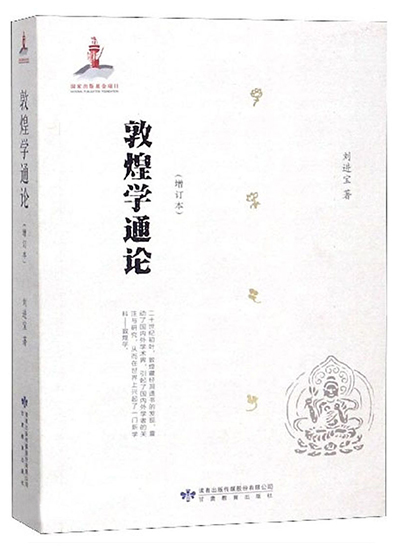Further exploring Dunhuang culture

An Introduction to Dunhuang Studies (Revised Edition)
Authored by Liu Jinbao, a professor from the Department of History at Zhejiang University, An Introduction to Dunhuang Studies was first published in 1991, followed by a revised edition in 2002. The latest revised edition was published in 2019.
With no major adjustments in the overall format and structure, the book is composed of five chapters, including Dunhuang's historical stages, Dunhuang's art, the discovery and outflow of cultural relics in the Mogao Cave 17 (a cave which preserved Buddhist sutras), the main content and value of documents found in Cave 17, and the emergence, development, and research of Dunhuang studies.
As Dunhuang studies has accelerated in recent decades, the author keeps pace with the times, incorporating the latest, major, or influential academic achievements into the 2019 edition.
The birth of the term "Dunhuang studies," or "Tunhuangology," has been a hot topic in recent years. Scholars tend to agree that this term was first proposed by the Japanese scholar Juntarō Ishihama (1888–1968), but it generated little effect at that time. After Chen Yinke (1890–1969) proposed the term in 1930, it was widely recognized and used, attaining great influence. As such, the 2019 edition stated that Chen was the first domestic scholar to propose "Dunhuang studies."
Located on a precipice's two flanks, Mogao Grottoes consist of a south section and a north section. Caves with colored sculptures and murals are mainly found in the southern section, which have been identified as places of worship for Buddha. However, the functions of the north section caves were not identified for a long time. From 1988 to 1995, the Dunhuang Research Academy conducted archaeological work in the northern Mogao Grottoes, taking each cave one-by-one, and revealing the nature and functions of the north section. These northern caves included monk grottoes, meditation grottoes, burial grottoes, and storage grottoes. More than 524 multilingual works of literature were discovered.
The north section of the Mogao Grottoes, as well as the archaeological reports and research findings published thereafter, have been the highlight of all archaeological work in Dunhuang over the past three decades. In this context, the author added a timely "new archaeological discoveries on the north section of the Mogao Grottoes" to the 2019 edition, allowing readers to better understand the major Dunhuang archaeological gains made in recent years, as well as the nature and functions of the Mogao Grottoes.
Chen Juxia is a professor from the Department of History at Shanghai University.
Edited by YANG LANLAN
